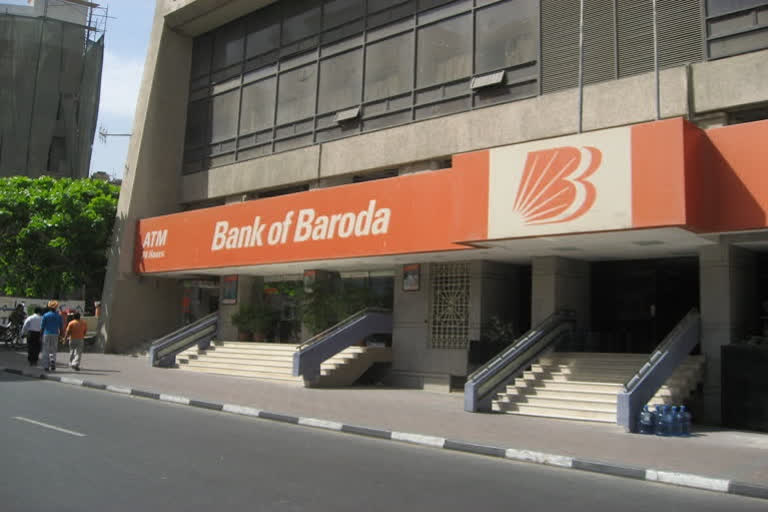Hyderabad: Banks already struggling with asset quality woes and disruptions arising due to large-scale mergers were caught in the grip of an inevitable spike in bad loans amid the ongoing pandemic. The bank’s borrowers are struggling with an unprecedented financial crisis with multiple challenges. Loans have become due after the six-month moratorium of RBI ended in August 2020. At the same time, they needed cash flows to restart their activities. The choice with bank borrowers is limited. They will opt to invest their scarce cash flows towards resuming economic activities opting to postpone repayment of loans. Unless they are eligible for the restructuring of loan facilities under RBI schemes, they cannot escape default. Close to 40 percent of bank borrows have reportedly availed moratorium which will become due as soon as the standstill clause in the classification of loans into bad loans is withdrawn. In such unprecedented adverse situation, rise in bad loans of banks could see a new peak in 2021-22 and may stretch its ill impact to 2022-23.
Magnitude of bad loans:
Bad loans are referred to as Non-performing Assets (NPAs), as they do not earn interest for the lenders. A loan deteriorates into NPA if the borrower does not pay the interest or loan instalment or both for a period of 90 days. NPAs are indicated in two forms. Gross NPAs (GNPAs) that represent the ratio of total NPAs to total assets of the banks. When provisions made against them as per prudential norms are deducted from GNPAs, net NPAs (NNPAs) are worked out. NNPAs are a continuing threat to the banking system.
In fact, just before the onset of the pandemic, GNPAs of banks began to show improvement falling from 9.1 percent in March 2019 to 8.2 by March 2020 and fell further to 7.5 percent by September 2020. But the situation changed after the pandemic mauled the economy and borrowers slipped into crisis. RBI in its Financial Stability Report (FSR) – June 2020 estimated that NPAs are likely to inch up to 14.7 percent by March 2021 in severe stress conditions and to 12.5 percent in baseline scenario.
Also Read: Gross NPAs may rise around 10% by Mar'21
But looking to the lingering crisis, banks should gear up to handle NPAs of a level going even beyond the RBI estimates in severed stress conditions. Banks while continuing to improve their capacity to lend should be prepared for a long haul in managing asset quality. Realizing the extraordinariness of the Covid induced distress; banks will have to live with higher NPAs for the next two years or so. But the inevitable asset quality woes should not be allowed to overwhelm the functioning of banks and should not douse the credit risk appetite that will be detrimental to the revival of the economy.
NPA crisis is not new:
Banks are capable to manage a higher level of GNPAs. The rise and fall of NPAs are not only linked to macroeconomic disruptions but also to policy shifts. It can be recalled that the GNPAs peaked to a new high of 23.2 percent in 1993 when asset classification norms were first implemented as part of banking sector reforms. In the next decade, it came down to 7.26 percent by 2003-04 and to 3.83 percent by 2013-14.
Again when asset quality review (AQR), a special audit of bad loans was introduced by RBI in Sept 2015 (a policy shift) and withdrew forbearance of restructuring of loans, GNPAs began to rise to reach a peak of 11.18 percent by 2017-18. The long term swings in NPAs are therefore a function of policy and macroeconomic shifts and implications in the change in the external environment. Even if the Covid induced stress takes the GNPAs beyond 14.5 percent, they will come down from 2022-23 onwards to settle down at the low end of single-digit. But the tendency of willful default has to end.
NPAs are social menace:
Notwithstanding the spike in GNPAs due to pandemic or sudden external events, a bad loan can cause insurmountable collateral damage to the economy. We have seen large size NPAs destabilizing the banking system in many ways causing untold misery to innocent stakeholders. A bad loan needs provision to be made that cuts the profitability of a bank. It impacts the capital base as the risk weight increases due to the rating downgrade of delinquent borrows. Non-circulation of funds out of repaid loan prevents the flow of credit to prospective entrepreneurs that can potentially eat into the future GDP. Banks toiling with huge NPAs will not be healthy enough to continue to lend. So, a bad loan is a virus that eats into the social well-being. Inclusive efforts are needed to educate borrowers to highlight moral responsibility to honour loan commitments. A bad loan is a social menace and systemic threat that needs to be tackled by all responsible stakeholders, or else more taxpayers’ money will go directly/indirectly to write off unpaid loans. Pandemic time will pass but more important is to ensure that there is social castigation of delinquent borrowers.
Also Read: RBI Guv discusses credit flow, rate cut transmission with bank MDs



